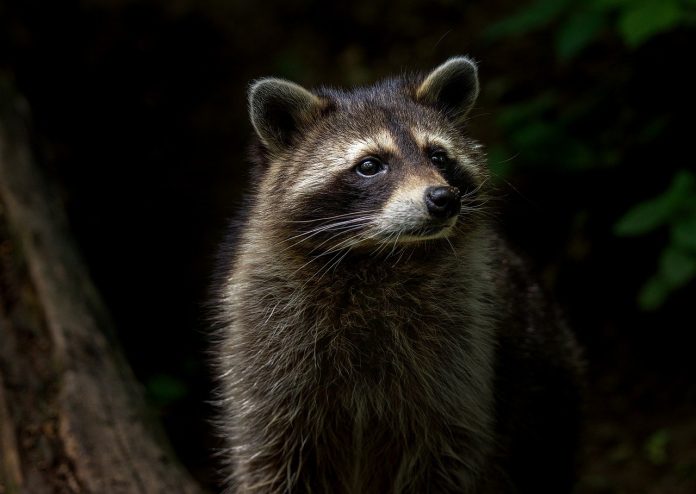The U.S. Fish and Wildlife Service defines a furbearer as a “mammal species that has traditionally been trapped or hunted for fur.”
History
Trapping of furbearers is an ancient practice first developed by our prehistoric ancestors as a way to provide food, clothing, medicines and shelter for survival.
Species of furbearers in North America have evolved around 15,000 years with human influence over their population dynamics. After the European settlement of North America, the fur trade and little to no regulation on trapping resulted in nearly wiping out furbearers like the beaver.
The public took notice of declines in the once abundant species and also became concerned about the humane treatment of animals being trapped.
By the 1930s, pro- and anti-trapping groups had fully entrenched and were waging information campaigns against each other. The campaigns continue to this day, though wildlife populations are now highly researched and regulated by federal and state agencies.
Regulated in Ohio
In Ohio, wildlife trapping is highly regulated. The most current Ohio trapping regulations can be found in Ohio Department of Natural Resources Division of Wildlife’s 2021-22 Ohio Hunting and Trapping Regulations Booklet or on the webpage, ohiodnr.gov.
Nov. 10 was the opening date of trapping season for most furbearers with the exception of beaver, river otter and coyote. Trapping season for beaver and river otter opens Dec. 26.
There is currently no season on coyotes, and though they are considered a furbearer, no fur taker permit or trapping education course is required to trap coyotes. A hunter safety course and hunting license is all that is required to trap coyotes in Ohio. I do recommend that anyone trapping coyotes go through a trapping education course and purchase a fur taker permit.
Any furbearer, other than a coyote, caught in the coyote traps cannot be legally kept without a fur taker permit. The trapping education course would also be useful to those only trapping coyotes to help gain familiarity with the safety and legal issues surrounding trapping.
In addition, fur taker permit holders directly support wildlife research, education and management with the $15 they pay for the permit.
Trappers association
Ohio is fortunate to have a very active Ohio State Trappers Association with district directors covering 15 districts in Ohio and three region Directors. The OSTA supports furbearer research studies, supports and provides public education on trapping and wildlife management, represents trappers when decisions are being made about trapping regulations and organizes state fur sales.
OSTA does face some difficulties with declining numbers of trappers. This is a trend across North America. Unfortunately, fur farms, disinformation campaigns and declining time spent outdoors by youth have been some of the factors contributing to these declines.
The average age of trappers is also increasing. The Association of Fish and Wildlife Agencies reported the average age of trappers as around 50 years with only about 10% of trappers being under the age of 24.
Need for mentors
Anyone who has ever spent time trapping knows how important and helpful it is to have an experienced mentor when learning to trap. Trapping is not easy, and beginners have to work hard to have success.
Learning the animal signs, sets and other tips and tricks that lead to success are things that only experienced trappers can impart on a beginner. Without a recharge of youth into trapping, the knowledge ends up at risk.
Why does the possible loss of trapping knowledge matter, though? Trapping of furbearers and other wildlife is done for a whole host of reasons other than for fur.
An increase of the human population and human land use along with decreasing wildlife habitat areas puts wildlife and humans in contact more than ever.
Nuisances
As a soil and water conservation district wildlife technician, I have received complaints of damage and suspicious behavior from raccoons, bats, coyotes, river otters, muskrats, beavers and bobcats.
I have received these complaints even while working in the second least populated county in the State of Ohio. The most frequent complaints I receive are about raccoons from farmers and homeowners.
Trapping provides both an economical and safe way to remove nuisance wildlife that can cause property damage, infrastructure damage and disease risk, especially in urban areas.
Commercial nuisance trappers are required to be licensed in Ohio. The licensed trappers that I know learned to trap as a hobby before realizing they could make money trapping nuisance animals.
I also had college classmates that had experience trapping and began working for the Animal and Plant Health Inspection Service during and after college. APHIS is a federal agency that as one of its responsibilities handles wildlife conflicts and damage.
Each person I know who traps professionally had trapping mentors and gained experience by spending time checking trap lines every day during multiple seasons. Now they are trusted by home and landowners to safely and effectively handle wildlife presenting damage and health risks.
Research and knowledge
Trapping knowledge is also important when researching wildlife and in protecting threatened and endangered species.
According to the Northeast Association of Fish and Wildlife Agencies, “The foothold trap is often used to conduct catch-and-release research studies on species such as coyote, red fox, bobcat, and otter. Often, trapped animals are collared and followed for months, if not years, with no apparent evidence of harm.”
Trappers can also help biologists who are studying wildlife diseases, parasites or even gut contents of animals who have been trapped.
Where humans have significantly altered landscapes, edge-loving species like raccoons have flourished. The increase in raccoons has spelled disaster to near-threatened species like the Allegheny woodrat.
A 2003 study published in the Conservation Biology journal by author Kathleen LoGiudice, details the deadliness of raccoon roundworm, a parasite present in raccoon scat, to the Allegheny woodrat. The raccoon roundworm may even be the cause for the extirpation of the Allegheny woodrat throughout much of its range.
Trapping raccoons can be helpful in limiting the spread of the roundworm. The Allegheny wood rats themselves are often studied by being trapped and released.
Many wildlife biologists, graduate and undergraduate students end up trapping wildlife for studies at some point during their careers or education.
Without the trappers that gain so much knowledge about the wildlife they trap, I would argue that we would know much less than we do about the wildlife species of North America. Conservation of North American wildlife and plants would be much more complicated without the use of trapping.
If you or someone that you know is interested in learning more about trapping, finding a mentor, or taking an education course, you may contact your local SWCD office, ODNR Division of Wildlife (ohiodnr.gov), or OSTA (ohiostatetrapper.org).
The trapper education course materials and test can currently be found on the Division of Wildlife website and mailed in for certification. The website link is ohiodnr.gov/wps/portal/gov/odnr/discover-and-learn/education-training/hunter-education/trapper-education.












Excellent article Christina, thank you!
I run a nuisance trapping business Bearded Critter Getter. If anyone is having problems with furbearing pest, please get a hold of me. 419-606-7114